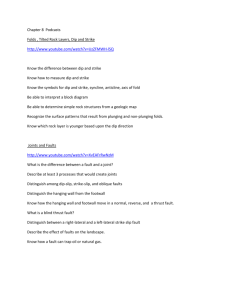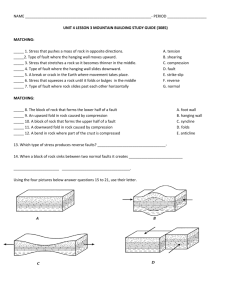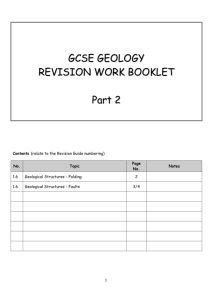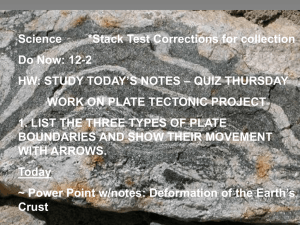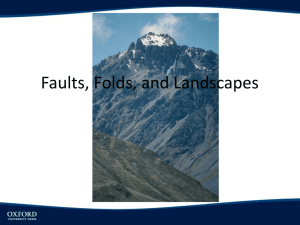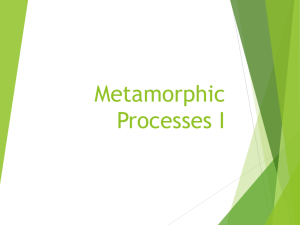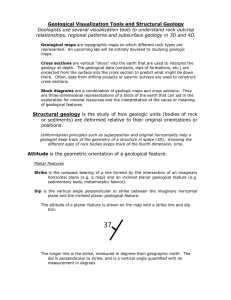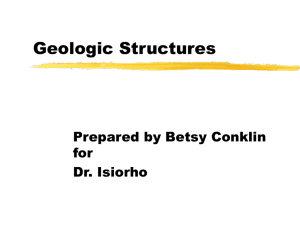Mtn Build Study Guide
advertisement
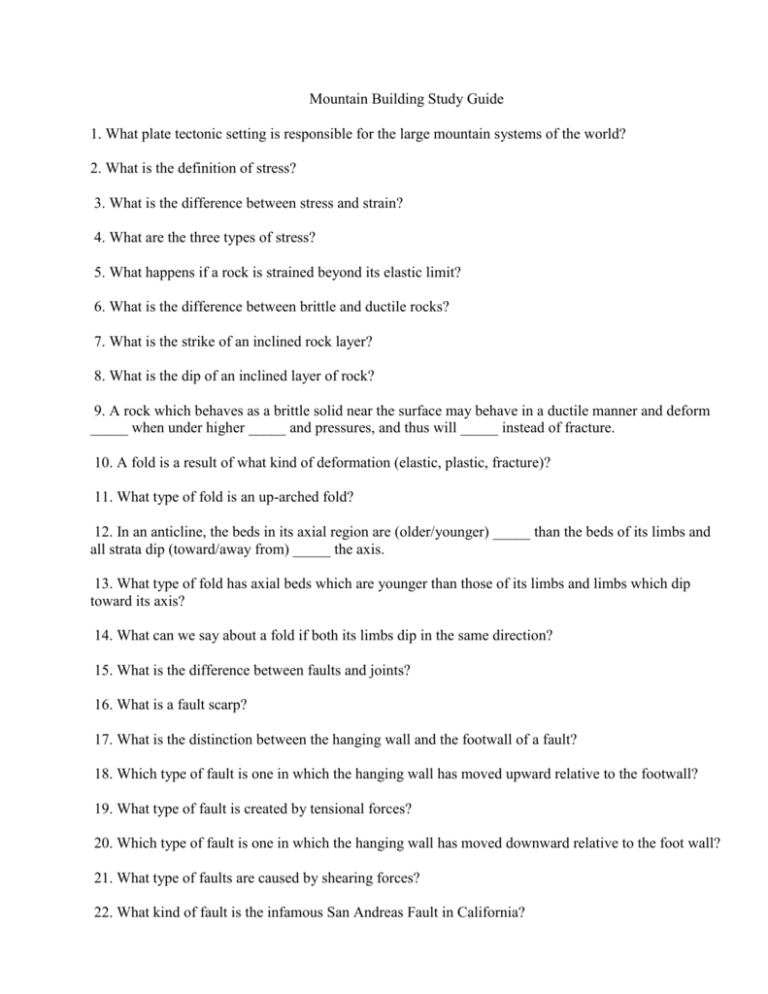
Mountain Building Study Guide 1. What plate tectonic setting is responsible for the large mountain systems of the world? 2. What is the definition of stress? 3. What is the difference between stress and strain? 4. What are the three types of stress? 5. What happens if a rock is strained beyond its elastic limit? 6. What is the difference between brittle and ductile rocks? 7. What is the strike of an inclined rock layer? 8. What is the dip of an inclined layer of rock? 9. A rock which behaves as a brittle solid near the surface may behave in a ductile manner and deform _____ when under higher _____ and pressures, and thus will _____ instead of fracture. 10. A fold is a result of what kind of deformation (elastic, plastic, fracture)? 11. What type of fold is an up-arched fold? 12. In an anticline, the beds in its axial region are (older/younger) _____ than the beds of its limbs and all strata dip (toward/away from) _____ the axis. 13. What type of fold has axial beds which are younger than those of its limbs and limbs which dip toward its axis? 14. What can we say about a fold if both its limbs dip in the same direction? 15. What is the difference between faults and joints? 16. What is a fault scarp? 17. What is the distinction between the hanging wall and the footwall of a fault? 18. Which type of fault is one in which the hanging wall has moved upward relative to the footwall? 19. What type of fault is created by tensional forces? 20. Which type of fault is one in which the hanging wall has moved downward relative to the foot wall? 21. What type of faults are caused by shearing forces? 22. What kind of fault is the infamous San Andreas Fault in California? 23. How is a fault classified when it has components of both dip-slip and strike-slip movement? 24. What are three ways in which mountains form? 25. What is the difference between horsts and grabens? 26. What type of forces produce block faulted mountains such as those in the Basin and Range Province of the southwestern United States? 27. What is an orogeny? 28. Which of the three major types of plate boundaries is responsible for most orogenesis? 29. What are microplates? 30. What percentage of the Pacific Coast of North America is thought to be composed of microplates? 31. What is the age of the oldest known rocks that have been dated? 32. In what country were these oldest dated rocks recently discovered? 33. What is a shield, such as the Canadian Shield? 34. What is the difference between a shield and a craton? 35. What is the name of the complex mountainous region which extends through North America from Alaska into central Mexico? 36. Continents grow and evolve by addition of felsic and mafic crust; a process known as A. addition. B. accretion. C. concretion. D. convergence. E. conformation. 37. Which of the following have become microplates? A. island arcs and ocean ridges B. seamounts C. fragments of other continents D. A and B E. all of the above 38. The microplates identified on the west coast of North America have been accreted within the past A. 200 million years. B. 100 million years. C. 20 million years. D. 10 million years. E. 2 million years. 39. An important means of continental accretion is plutonism.

